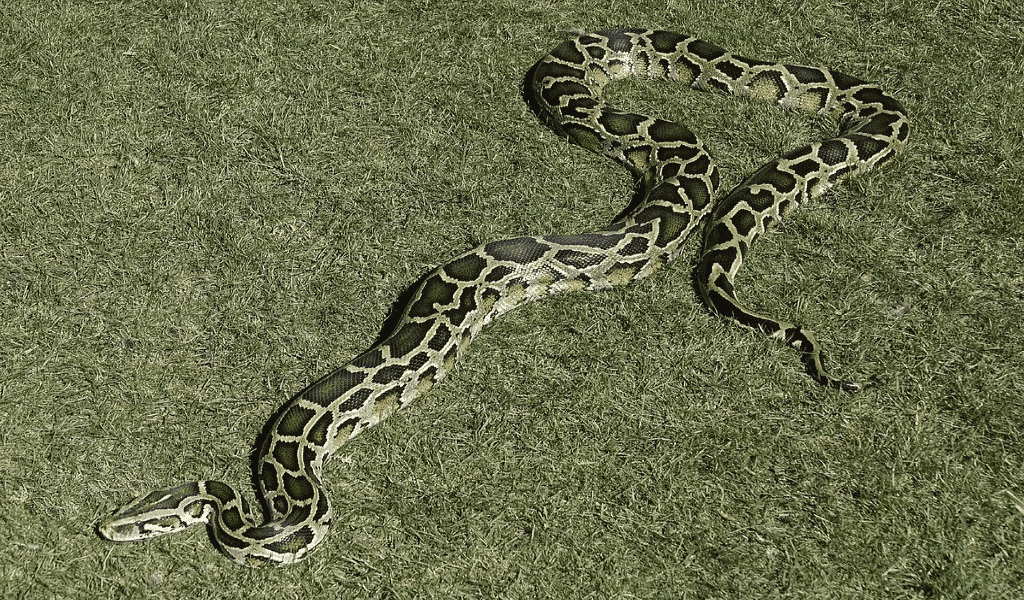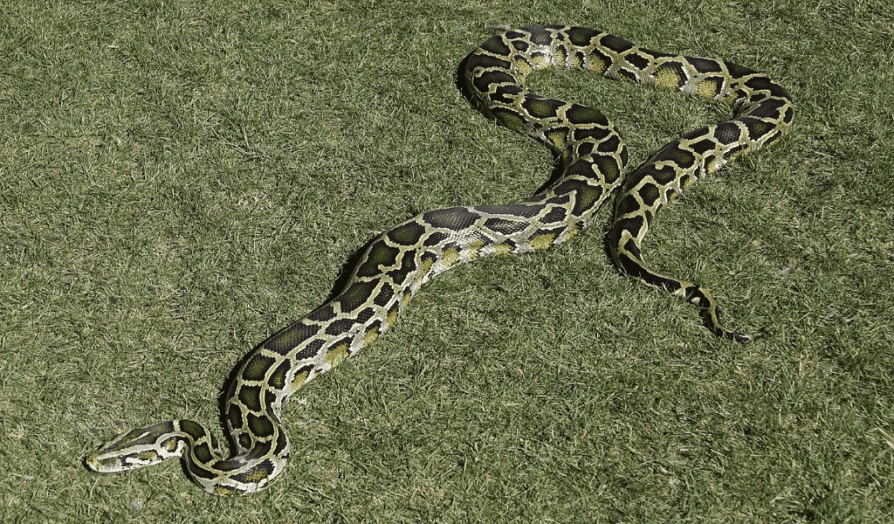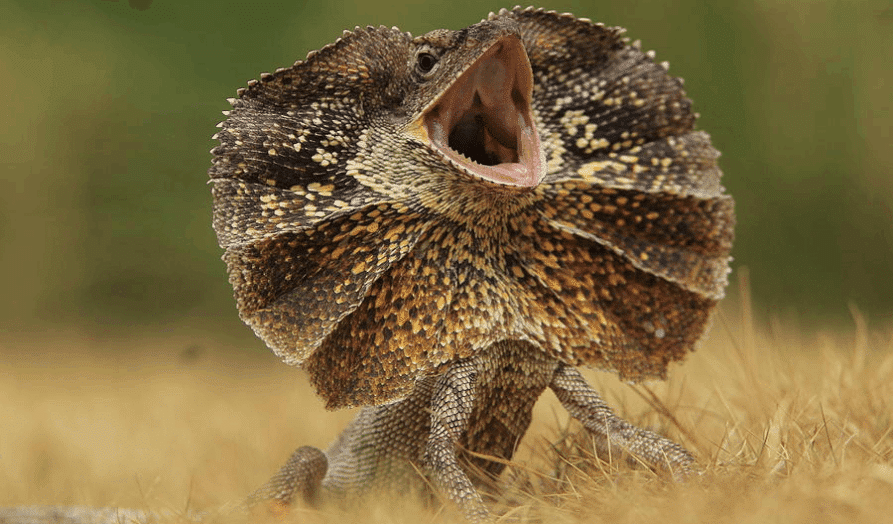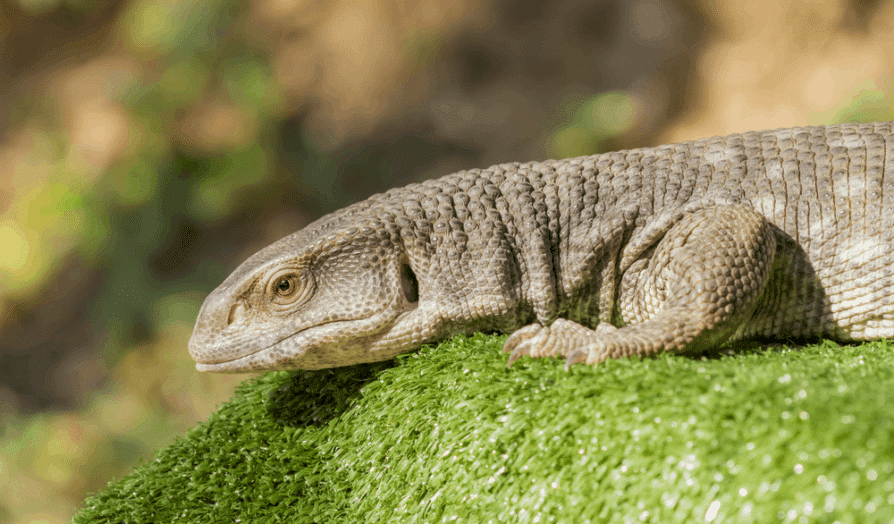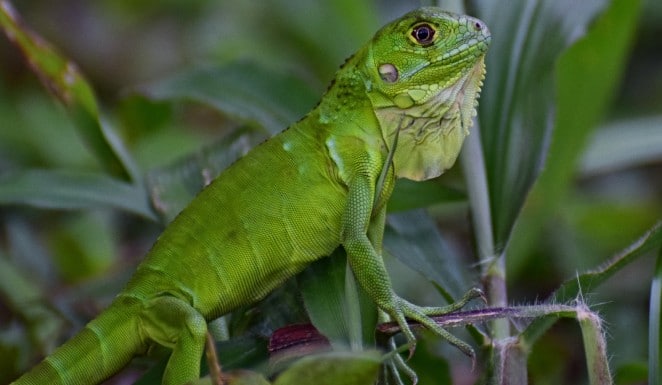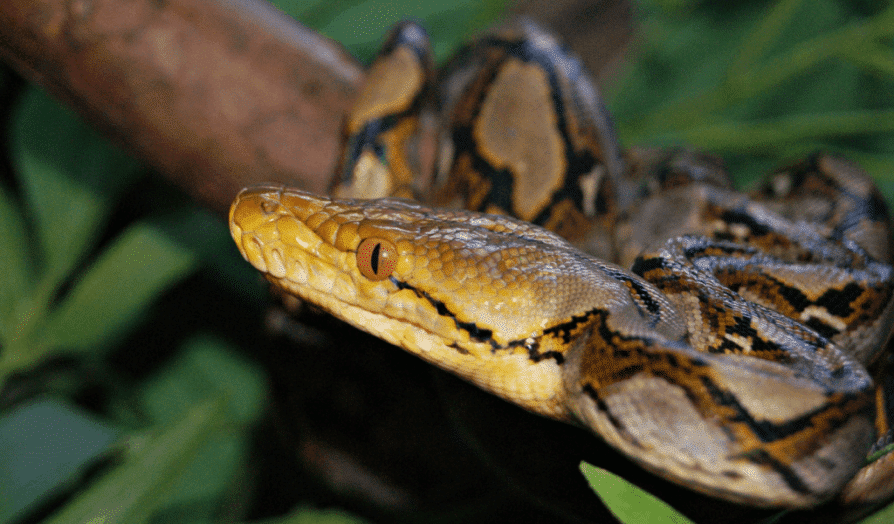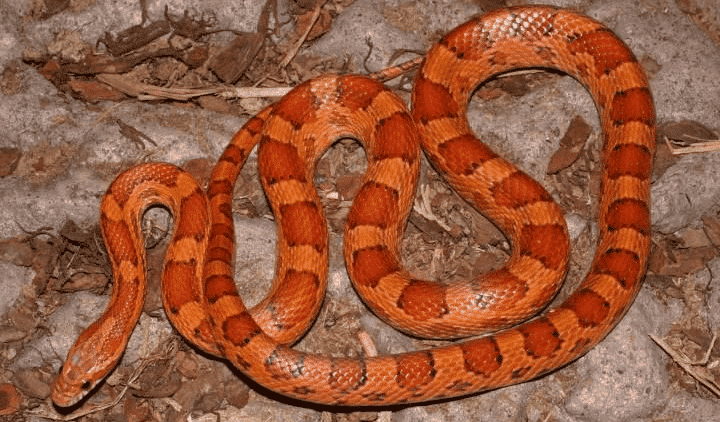Geographic Distribution: Burmese pythons spread throughout South and Southeast Asia, including Eastern India, Southeast Nepal, Western Bhutan, Southeast Bangladesh, Myanmar, Thailand, Laos, Cambodia, Vietnam, North of Malaysia and Southern China in Fujian, Jiangxi, Guangdong, Hainan, Guangxi and Yunnan. They´re also found in Hong Kong and Indonesia in Java, south of Sulawesi, Bali and Sumbawa.
Habitat: often found close to swamps, jungles and grazing areas (Sumbawa, India), but can also be found in tropical forest plains (Indonesia, Southeast Asia) till hot temperate mountain forests (Nepal, China).
Diet: they are carnivorous and feed mainly on small mammals and small birds, but can also include reptiles and amphibians. They don’t have very accurate vision, so they use chemical receptors on their tongues and heat sensors along their jaws to detect and chase prey. They kill by constriction, wrapping around the animal, preventing blood flow, which in turn prevents oxygen reaching the vital organs.
Reproduction: they are solitary animals, so they are usually only seen together during the mating season. Pythons reach sexual maturity around 2-3 years of age. Both sexes have cloacal spores, which they use during mating. In the wild, the mating season takes place between November and February, and consequently the posture takes place between March and April. Females can lay up to 100 eggs and the incubation period can take between 2-3 months, during which time the female doesn´t feed herself. As they are ectothermic (animals that rely on an external sources of heat to maintain their body temperature) in order to heat the eggs and keep them at a good temperature, females continuously contract and shake their muscles.
Behaviour: They are excellent swimmers (so they often live close to water and can stay up to about 30 minutes submerged, without breathing), but they are also climbing experts, due to their rather prehensile tail. When young, they spend most of their time in the trees, but as they grow the climb becomes more difficult and they begin to live mainly on the ground.
Conservation Status: Vulnerable (VU); included in Appendix II of CITES
Curiosities: in captivity, color mutations, that generally would not occur in the wild, have been selected. The best known mutation is albino, characterized by presenting a white color and patterns in shades of yellow and orange.
Threat factors: habitat destruction, illegal capture for the trade of exotic animals and hunting for their skin and also meat for human consumption, are this species main threat.
Scientific name: Python bivittatus
Class: Reptilia
Order: Squamata
Family: Pythonidae
Dimensions: 5-7 m length
Weight: 90 kg
Lifespan: 20-25 years



